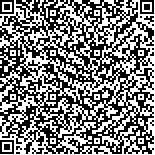| 邹宝华,吴 璇,李占东.恶性肿瘤患者症状调查及患者日记工具可行性分析[J].中国肿瘤,2021,30(12):952-962. |
| 恶性肿瘤患者症状调查及患者日记工具可行性分析 |
| Prevalence of Symptoms of Cancer Patients and Feasibility of Patient Diary Tool(PDT) |
| 中文关键词 修订日期:2021-07-31 |
| DOI:10.11735/j.issn.1004-0242.2021.12.A012 |
|
 |
| 中文关键词: 恶性肿瘤 症状 患者日记 简明膳食自评工具 |
| 英文关键词:cancer symptoms patient diaries concise diet self?鄄evaluation tools |
| 基金项目:中国癌症基金会北京希望马拉松专项基金(LC2018A01); |
|
| 摘要点击次数: 1318 |
| 全文下载次数: 342 |
| 中文摘要: |
| 摘 要: [目的] 分析肿瘤患者在入院时、住院期间及出院时的症状分布及患者日记管理工具在疾病管理中的可行性。[方法] 选取全国17家医院的恶性肿瘤患者,向其发放患者日记,指导其如何填写,嘱其每日认真填写日记。通过第三方研究者问询获得并分析患者在住院时、住院期间及出院时的相关症状,通过患者对日记满意度调查与主管医生对日记认可度调查分析患者日记工具的可行性。[结果] 共纳入符合要求的152例患者,调查发现肿瘤患者入院时排名前10位的症状分别是疲乏、食量下降(近1周)、疼痛、体重下降(近1个月)、睡眠不好、厌食、胸闷气短、便秘、咳嗽咳痰和心情郁闷;住院期间排名前10位的症状分别是便秘、恶心呕吐、厌食、食量下降(近1周)、腹胀、疼痛、睡眠不好、疲乏、腹泻和发热。出院时排名10位的症状分别是疲乏、便秘、睡眠不好、胸闷气短、疼痛、咳嗽咳痰、厌食、出汗、小便减少、心情郁闷。肿瘤疾病分期为Ⅳ期的患者,入院时的症状患病率明显高于非Ⅳ期患者。绝大部分患者(91.4%,139/152)认可患者日记,认为该患者日记能帮助医生更好的了解自己,65.1%(99/152)的患者表示自己出院后会继续填写该日记内容,82.2%(125/152)的患者表示填写日记不会造成负担。绝大部分主管医生(77.6%,118/152)认为患者日记设计合理,77.0%(117/152)的主管医生认可患者日记并愿意继续使用,75.7%(115/152)的主管医生认为患者日记实用性很强,72.4%(104/152)主管医生认为患者日记能够帮助自己全面了解患者症状,64.4%(98/152)的主管医生认为患者日记能够提高查房效率。[结论] Ⅳ期肿瘤患者相关症状发生率明显高于非Ⅳ期患者,需重点监测和管理。肿瘤患者临床症状在住院期间部分会得以改善,但治疗相关的不良反应使出院时症状又有升高,需要主管医生引起重视并加强出院后随访及症状管理。患者日记工具能够使患者重视肿瘤所有相关的症状的监测,能提高医护工作人员的查房效率,有助于患者及家属在出院后的疾病全程相关症状管理,值得进一步临床研究及使用。 |
| 英文摘要: |
| Abstract: [Purposes] To investigate the feasibility of patient diary tool in the symptom prevalence study of hospitalized cancer patients. [Methods] A total of 152 cancer patients with qualified symptom records from 17 hospitals nationwide were enrolled in this study. Patients were asked to fill the diaries under guidance of medical staff every day. The related symptoms of patients before, during and after hospitalization were obtained by third-party researchers. The compliance and acceptance rate of patients and doctors for the diary were analyzed through the survey, and the feasibility of patient diary tool was assessed. [Results] The top ten symptoms of cancer patients when they were admitted to the hospital were fatigue, decreased appetite(for 1 week), pain, weight loss(for 1 month), poor sleep, anorexia, chest condition, constipation, cough and expectoration and depression. The top ten symptoms during hospitalization were constipation, nausea and vomiting, anorexia, decreased appetite(for 1 week), abdominal distension, pain, poor sleep, fatigue, diarrhea and fever. The top ten symptoms at discharge were fatigue, constipation, poor sleep, chest condition, pain, cough and expectoration, anorexia, sweating, decreased urination and depression. The prevalence of symptoms at admission for patients with Ⅳ stage tumor was significantly higher than that of non-Ⅳ stage patients. Most of patients(91.4%, 139/152) recognized that the patient’s diary could help doctors understanding themselves better, 65.1%(99/152) patients said that they would continue to fill in the diary after they were discharged from the hospital, 82.2%(125/152) patients said that filling in the diary would not be a burden to them. Most of doctors in charge(77.6%, 118/152) thought that the design of patient diaries was reasonable, 77.0%(117/152) doctors were willing to continue to use them, and 75.7%(115/152) doctors agreed that patient diaries were very practical, 72.4%(104/152) doctors believed that patient diaries could help them fully understand the symptoms of patients, and 64.4%(98/152) doctors believed that patient diaries could improve the efficiency of ward rounds. [Conclusion] The prevalence of related symptoms in patients with stage Ⅳ tumor is significantly higher than that in patients with non-stage Ⅳ tumor, to which more attention should be paid for monitoring and management. The clinical symptoms of cancer patients will be improved during hospitalization, but the treatment-related adverse effects will make the symptoms reoccur when they discharge from hospital, which needs more attention from the doctor to the follow-up and symptom management after discharge. The patient diary tool can make patients pay attention to monitor all tumor related symptoms, improve the efficiency of ward round for medical staff, and help patients and their families to manage the whole process of disease-related symptoms after discharge, which is worthy of further clinical research and application. |
|
在线阅读
查看全文 查看/发表评论 下载PDF阅读器 |